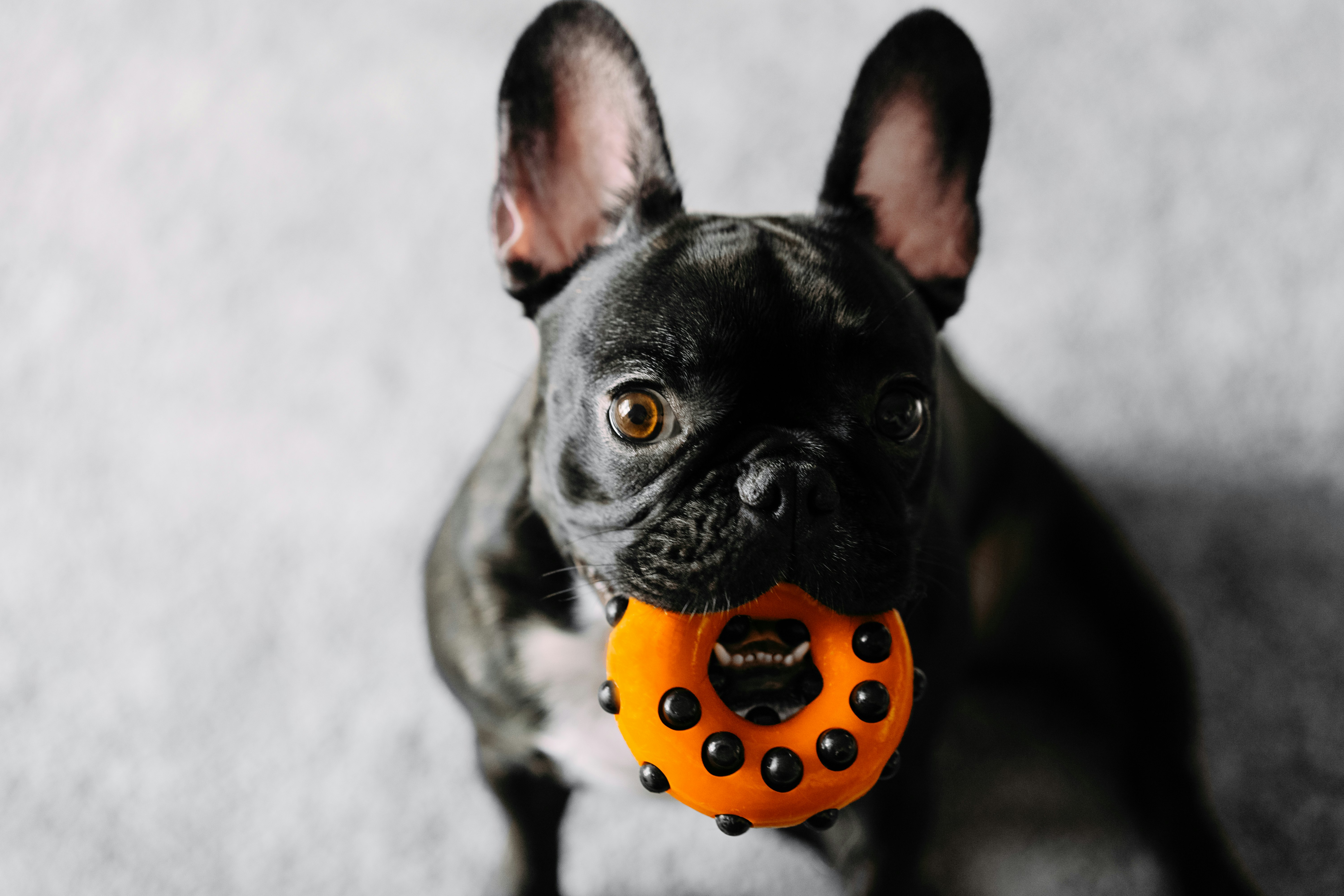
Unlike cats, dogs seem to wear their emotions on their chest — or, rather, on their tail. Interpreting what that emotion is can be harder than you might think.
Since owners can’t communicate with dogs the same way we can with humans, it’s hard to know if a pet’s low energy is simply a result of a long walk or an indication of a more troubling physical or mental health condition.
Inverse spoke with veterinarians, dog trainers, and animal behaviorists to answer one of the most common questions an owner might have: Is my dog depressed? And how can I tell?
“Understanding what is normal behavior for your dog is key to spotting changes in both their mood state and physical wellbeing,” Caroline Wilkinson tells Inverse. Wilkinson is a certified animal behaviorist and the founder of the digital pet coaching service Barket Place.

Is my dog depressed?
“Signs of depression in dogs are similar to those seen in humans,” Rachael Claire tells Inverse. Claire is an accredited dog behaviorist and separation anxiety trainer with the Institute of Modern Dog Trainers.
Some common signs of depression in dogs include:
- Lethargy or tiredness
- Poor appetite
- Low interest in walks/exercise
- Changes in sleeping patterns, including excessive sleeping
“Dogs that are depressed may act down. They may not be willing to do the things they normally enjoy, such as go for a walk, eat, or play,” Chyrle Bonk, a veterinarian at PetKeen, tells Inverse.
You should also pay attention to the way your pet eats. Just as humans may express less interest in their favorite foods when depressed, dogs may also show less excitement toward food.
An anxious or worried dog may eat their food more quickly than they usually do or even ignore or spit it out, Amey Markham tells Inverse. Markham runs The Good Dog Journey, which helps prospective owners find the right dog for them.
Body language can also yield tremendous insight into a dog’s mood.
According to Claire, a lack of tail wagging in a normally excitable dog may be a red flag of depression. A closed mouth and ears that are held flat — rather than pricked upward — is another sign. Pups’ eyes can also indicate sadness; the corners around the eyes may be drooping and ridges can also appear on the forehead.
“Sad dogs tend to spend most of their time led down with their heads resting on their paws,” Claire says.
Bonk adds that depressed dogs “may seclude themselves or become extra clingy to you or your family.”
While it can be hard to find clear signs of depression, the best way to tell if your dog may be feeling down is to pay attention to any changes to their usual behavior.
“Look out for when our pets are hiding more often, becoming more withdrawn, or less willing to participate in the activities they used to love,” Carling Matejka, a veterinary spokesperson for Solid Gold, a holistic pet food company, tells Inverse.
Why is my dog depressed?
“As with humans, there is sometimes no obvious reason for depression,” Claire says.
Like a human, a dog can get depressed for any number of reasons, but experts suggest that health reasons could be a cause of the change in a dog’s behavior. Consult a veterinarian or veterinary behaviorist if you have concerns about your pet’s mood.
“Depression in pets does not always mean that your pet is experiencing mental health signs,” Matejka says.
“Dogs are great at hiding pain or illness from us — they may well be suffering in silence,” Wilkinson adds.
Markham says you should ask the following questions to ascertain why your pet might be troubled.
- Is their activity level normal?
- Is your pet moving in a normal way?
- Are they pooping and peeing normally?
“All of these things can cause a dog to feel unhappy and pain could be the cause, so it’s always worth doing a vet check if you have any concerns,” Markham says.
Underlying pain problems could also manifest as low energy — which might be confused with depression — so you may need to conduct a physical assessment through your veterinarian.
“If the dog is withdrawn or is not moving, I would be thinking potentially more about a pain-related issue,” Leigh Siegfried tells Inverse. Siegfried is the founder of Opportunity Barks, which provides research-based, tailored dog training.
Wilkinson adds that “a physical assessment, full blood panel, and review of what diet they’re eating — and whether it suits them — is a great place to start.”
Stress can manifest in dogs as life-threatening conditions that require immediate veterinarian intervention, such as urethral blockages or urinary issues, so don’t hesitate to contact your veterinarian if you notice something amiss with your pet’s behavior.
“Malnutrition, metabolic diseases, kidney disease, liver disease, and/or cancer could be reasons [your] pet may be acting differently,” Matejka says.
According to Siegfried, dogs may also be depressed because they’re not getting as much exercise or natural movement as they’re used to, so you may need to increase the activities your dog finds enriching and engages their desire for play and predatory instincts. These activities include food puzzles or chew toys.
“Even using our mobile phones too much can cause our dogs to feel excluded, and thus depressed”
“The more opportunities a dog has to search for food and use their brain each day, the more endorphins and serotonin circulate,” Claire adds.
Environmental disturbances or life changes can also lead to depression in dogs.
“One of the more common reasons for dogs feeling unhappy can be during a time of grief, either for a previous owner or if they lived with another dog that passed away,” Markham says.
Moving is another common trigger for dogs, especially if they’re accustomed to a lot of space in a backyard and move to a smaller apartment in a city.
“That drastic change in environment is going to cause some adjustment,” Siegfried says.
Bonk says that other common life changes, like changes in the owner’s work schedule, bringing home a baby, or adopting another pet, can reduce the amount of time you have for your pup, therefore contributing to depression.
“If someone has gone from working from home to returning to the office full time, the dog is likely to struggle with this adjustment and potentially develop separation anxiety,” Claire adds.
Finally, if all else fails, reflect inward on your own behavior. Just like our mood can impact our human companions, it can also affect our canine friends. If you’re neglecting your pup’s emotional needs, they’ll respond accordingly.
“Boredom or isolation can also lower a dog’s mood. In fact, even using our mobile phones too much can cause our dogs to feel excluded, and thus depressed,” Wilkinson says.

Is my dog depressed or just tired?
Sometimes it’s hard to tell if our human bodies are tired from a long day or if there are more complex emotions that are manifesting in physical lethargy. Dogs can be the same way.
“It is good for dogs to have rest days, the same as humans to let them decompress,” Markham says.
It’s important to look at the context. For example, Siegfried says if your dog just hiked five miles with you and takes a nap as soon as they get home, that’s probably normal, even for an energetic pup.
Perhaps the most important way to distinguish whether your dog is depressed or tired is the length of time. If your pet isn’t as energetic for a day here or there or occasionally skips dinner, that’s not the same thing as being tired for multiple days in a row — a possible indication of depression.
“Depression is usually going to last longer than being tired,” Bonk says.
“It may be that your dog has just had too much of a good thing and needs some doggy downtime”
Some experts suggest your dog may need more sleep than you think, hence why they may be tired. Claire explains that some breeds may require up to 18 hours of sleep, but the minimum is 12 hours of sleep over a 24-hour period for any dog.
“If you are noticing signs of your pet moping around or sleeping more, let your pet rest for 12 to 24 hours and see if their behavior returns to normal,” Matejka adds.
Also, pay attention to any recent environmental changes that could be affecting your pooch’s behavior.
“If you’ve had a busy time recently, perhaps with guests visiting or going on vacation — it may be that your dog has just had too much of a good thing and needs some doggy downtime,” Wilkinson adds.
If your dog is exhibiting unusual behavior, including excessive tiredness, Claire says you should ask yourself the following questions to get to the root cause:
- Is this behavior new?
- Has their routine changed in any way recently?
- Are they being fed a nutritious diet?
- Are they medically fit?
- Are they an energetic breed or a young dog? Or are they a calmer breed who is reaching middle age?
- Could the weather be reducing their desire to exercise?
Several experts discuss how a lack of enriching, dog-specific activities — natural movement, sniffing, chewing, playing, and digging — could be killing your pup’s mood.
“Chewing and sniffing are also great ways to release calming endorphins and help them feel good,” Markham says.
“Increased enrichment really means you’re not only meeting the basic needs of the dog — food, water, shelter — but the mental stimulation,” Siegfried says.
Claire suggests taking your dogs on low-intensity walks where they have ample opportunity to sniff at objects along the way. High-intensity walks are not necessary or even optimal.
“Too often owners are keen to drag their dogs along away from scents, but for dogs, this is the best and most important part of their day where they gather information and decompress,” Claire says.
Can my dog be depressed in the same way a human can?
“Dogs can definitely get depressed,” Markham says. Experts say dogs share many common emotions with humans, which is probably why we get along so well.
For most dogs, extra attention and care from their human owners will be key to helping get their mood and behavior back on track.
“Most dogs bounce back from depression after a few days to weeks of rest, love, and care,” Matejka says.
Matejka says that you should pay attention to the things your dog loves and do more of them when your pet is feeling down. These activities might include greater social interaction, going for car rides, or more exercise.
“Do not forget to reward your dog with positive reinforcement when they do show signs of happiness — tail wagging — with extra scratches, low-calorie treats (do not give too many), or excitement in your voice,” Matejka adds.
That being said, according to Matejka, you should not py your pet with treats when they are moping, because your dog may think you are rewarding this behavior.
If these methods don’t work, speak to your veterinarian. Prolonged depression could be a sign of physical pain, an underlying health condition, or more concerning mental anguish.
“Sometimes, pain-related issues or limited mobility issues can masquerade as potential sadness or lethargy,” Siegfried explains.
Matejka says a veterinarian may also prescribe anti-anxiety or anti-depressant medication to help your pet.
“If you feel your dog is depressed, once you’ve ruled out any physical issues with your vet, consider working with an [animal] behaviorist to work out a plan to support your dog,” Wilkinson adds.







